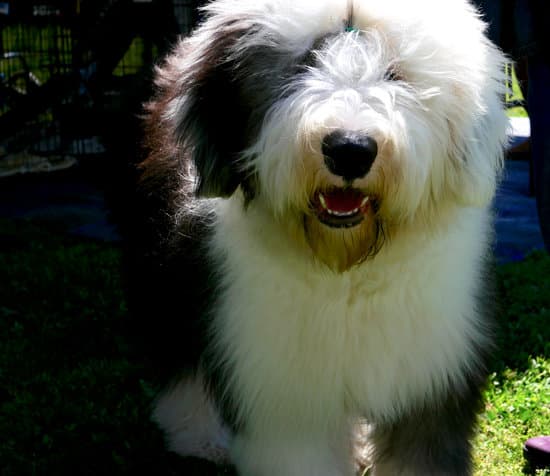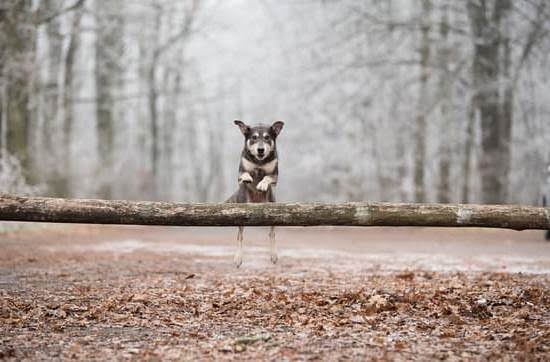Wondering “how old should my dog be potty trained“? Potty training is an essential aspect of owning a dog, and it is important to start this process at the right time for your furry friend. Understanding the developmental stages of canines can help determine when your dog is ready to start potty training.
Potty training is crucial for dogs as it helps them learn appropriate bathroom behavior and prevents indoor accidents. It also strengthens the bond between you and your pet and sets the foundation for good habits. By understanding the signs that indicate your dog is ready for potty training and choosing the right method, you can successfully teach your pet this important skill.
Signs that your dog is ready for potty training may include sniffing around or circling, indicating they need to go outside. Creating a consistent schedule and being patient with your dog are key factors in successful potty training. Additionally, knowing common pitfalls to avoid during this process and troubleshooting any challenges that may arise can greatly contribute to a positive outcome.
Understanding the Canine Developmental Stages
When it comes to potty training your dog, it’s important to understand the different developmental stages that your furry friend will go through. Each stage brings about unique challenges and opportunities for potty training success. Here are the key canine developmental stages to be aware of:
- Puppyhood (0-6 months): During this stage, puppies are like sponges, soaking up information and learning at a rapid pace. They may have limited bladder control and may need to go potty more frequently. It’s important to be patient and consistent with their potty training during this time.
- Adolescence (6-18 months): As dogs enter adolescence, they may become more independent and test boundaries. This can sometimes lead to regression in their potty training habits. It’s important to continue with consistency and positive reinforcement during this phase.
- Adulthood (1-7 years): Adult dogs generally have better bladder control and can hold it for longer periods of time. However, older dogs may experience health issues that could impact their potty training habits. Keep an eye out for any changes in behavior or accidents in the house.
Understanding these stages will help you tailor your potty training approach to suit your dog’s specific needs at each point in their development. By being attentive to the changes that come with each phase, you can set realistic expectations for your dog’s potty training journey and make adjustments as needed.
Remember that every dog is an individual, so be sure to take into account their unique personality and temperament when considering how old should my dog be potty trained.
Signs Your Dog Is Ready for Potty Training
Dogs, like humans, have their own developmental stages that they go through as they grow. When it comes to potty training, it’s important to understand these stages in order to determine the right time to start the process.
One of the most common questions among new dog owners is, “How old should my dog be potty trained?” The answer to this question varies depending on the breed and individual dog, but there are some general signs that can indicate when a dog is ready for potty training.
One of the key indicators that your dog is ready for potty training is bladder and bowel control. Puppies typically gain better control over their bodily functions as they get older, usually around 12-16 weeks of age.
If you notice that your puppy is able to hold their urine for longer periods of time and has more predictable bathroom habits, it may be a good time to start potty training. Additionally, if your dog begins showing signs of discomfort or restlessness before eliminating, this could also be a sign that they are ready for potty training.
Another sign that your dog is ready for potty training is their ability to communicate their need to go outside. Some dogs naturally show signs such as whining, scratching at the door, or circling before they eliminate.
If you notice any of these behaviors in your dog, it may be an indication that they are ready for potty training. Understanding these signs and being able to recognize when your dog is ready for potty training will make the process much smoother and more successful.
As with any aspect of raising a dog, patience and consistency are key factors in successful potty training. While it may take time for your dog to fully grasp the concept of going outside to eliminate, being diligent in observing their behavior and providing positive reinforcement will ultimately lead to success in potty training.
Choosing the Right Potty Training Method for Your Dog
When it comes to potty training your dog, choosing the right method is crucial for success. There are several different approaches you can take, and finding the one that works best for both you and your dog is essential. The key to effective potty training is understanding your dog’s unique needs and behaviors.
One popular method is crate training, which involves using a crate to confine your dog when they are not being supervised. Dogs naturally avoid soiling their living space, so the idea behind crate training is that they will learn to hold their bladder until they are taken outside. Positive reinforcement is also an important aspect of this method, as you should reward your dog for going potty in the appropriate place.
Another common approach is paper or pad training, which involves teaching your dog to go potty on a specific surface, such as a puppy pad or newspaper. This can be especially useful for owners who live in apartments or homes without easy access to outdoor areas. However, it’s important to eventually transition your dog from using the pad indoors to going outside.
Finally, some owners opt for the direct supervision method, where they closely monitor their dog’s behavior and take them outside frequently. This approach requires a significant time commitment but can be very effective if done consistently.
Ultimately, the best potty training method for your dog will depend on their individual personality and habits. It’s important to be patient and observant as you work with your furry friend to establish good potty habits.
| Potty Training Method | Description |
|---|---|
| Crate Training | Uses a crate to confine the dog when unsupervised and utilizes positive reinforcement. |
| Paper/Pad Training | Teaches the dog to go potty on designated indoor surface before transitioning outdoors. |
| Direct Supervision | Involves close monitoring of the dog and frequent trips outside. |
Setting Up a Potty Training Schedule
When it comes to potty training your dog, setting up a consistent schedule is crucial for success. Just like with young children, dogs thrive on routine and having a set schedule will help them understand when and where they should be going to the bathroom.
Understanding Your Dog’s Bladder Capacity
One important aspect of setting up a potty training schedule is understanding your dog’s bladder capacity. Puppies have smaller bladders and may need to go more frequently than adult dogs. As a general rule, puppies can hold their bladder for about one hour for every month of age, while adult dogs can typically hold it for 4-6 hours.
Creating a Routine
Start by taking your dog outside first thing in the morning, right before bed, and after meals. These are times when they are most likely to need to use the bathroom. Additionally, take them out every few hours during the day and give them plenty of opportunities to go outside. By creating a routine, you are helping your dog understand when it’s time to go potty.
Consistency Is Key
Consistency is key when it comes to potty training. Stick to the schedule as much as possible, even on weekends or when you’re busy. By establishing consistency, you are helping your dog learn what is expected of them in terms of potty behavior.
By implementing a solid potty training schedule and sticking to it consistently, you’ll increase the likelihood of successfully potty training your dog at any age.
Common Pitfalls to Avoid During Potty Training
Potty training your dog can be a challenging process, and it’s important to be aware of common pitfalls that could hinder your efforts. By understanding these potential obstacles, you can proactively avoid them and set your dog up for success in their potty training journey.
Inconsistency in Routine
One common pitfall in potty training is inconsistency in the routine. Dogs thrive on predictability and routine, so it is important to establish a consistent schedule for potty breaks. This includes feeding times, play times, and designated potty breaks throughout the day. Inconsistency can lead to confusion for your dog, making it more difficult for them to grasp the concept of potty training.
Punishing Accidents
Another pitfall to avoid is punishing your dog for accidents. Accidents are a natural part of the learning process, and punishment can create fear or anxiety around pottying in front of you. Instead of punishment, focus on positive reinforcement for desired behavior by offering praise or treats when your dog eliminates in the appropriate spot.
Not Understanding Your Dog’s Signals
It’s essential to pay attention to your dog’s signals during the potty training process. Signs that your dog needs to eliminate include sniffing, circling, whining, or heading towards the door. By understanding and recognizing these signals, you can preemptively guide your dog to the designated potty area before an accident occurs.
Patience and Consistency
Potty training your dog is an essential part of their overall development and well-being. It not only helps to keep your home clean, but it also teaches your dog important habits that will benefit them throughout their lives. Patience and consistency are key factors in successful potty training, as they help to reinforce good habits and create a strong bond between you and your pet.
Why Patience Matters
Patience is crucial when it comes to potty training your dog. Just like with any form of training, dogs need time to learn and understand what is expected of them. Getting frustrated or losing your patience can actually hinder the potty training process, as it can cause stress and anxiety for your dog. Remember that accidents will happen, and it’s important to remain calm and patient during this learning process.
The Power of Consistency
Consistency is another important factor in successful potty training. Dogs thrive on routine, so maintaining a consistent schedule for potty breaks is essential. This means taking your dog out at the same times each day, praising them when they eliminate in the appropriate spot, and using consistent commands or cues. Consistency helps to reinforce good behavior and makes it easier for your dog to understand what is expected of them.
By being patient and consistent with your potty training efforts, you can set your dog up for success and establish good habits that will last a lifetime. Keep in mind that every dog is different, so it’s important to be understanding of their individual needs and progress. With time, effort, and the right approach, you can successfully potty train your furry friend.
Troubleshooting
Potty training a dog can be a challenging process, and it’s common for pet owners to encounter obstacles along the way. If your dog is struggling with potty training, it’s important to remain patient and consistent in your approach. Here are some tips for troubleshooting if your dog is having difficulty with potty training.
First, it’s crucial to evaluate whether or not your dog is physically able to control their bladder and bowels. Puppies under 12 weeks of age typically do not have full control over these functions, so expecting them to be fully potty trained at this age may be unrealistic. Understanding the developmental stages of your dog is essential in determining if they are ready for potty training.
If your dog is showing signs of readiness for potty training but is still having accidents in the house, it’s important to examine the method you are using. Are you taking your dog outside frequently enough? Are you providing positive reinforcement when they go to the bathroom outside? Make sure that you are using an effective potty training method that works for both you and your dog.
In some cases, dogs may struggle with potty training due to underlying medical issues such as urinary tract infections or gastrointestinal problems. If you suspect that your dog’s struggles with potty training may be related to a medical issue, it’s crucial to consult with a veterinarian for proper diagnosis and treatment. Taking proactive steps to address any potential health concerns can greatly improve your dog’s success with potty training.
Celebrating Success
In conclusion, potty training is a crucial aspect of raising a well-behaved and happy dog. Understanding the developmental stages of your canine companion is key in determining the right time to start potty training. Each dog may show different signs of readiness, so it’s important to be observant and patient when embarking on this journey.
Choosing the right potty training method and setting up a consistent schedule are essential for successful potty training. It’s also important to avoid common pitfalls such as punishment or scolding, as these can hinder the process. Instead, focus on patience and consistency, as these are the key factors in successfully potty training your dog.
For those experiencing difficulties with potty training, troubleshooting steps are available to help address any challenges that may arise. And finally, celebrating successes and reinforcing good habits are vital in maintaining your dog’s potty training routine. By following these tips and being patient with your furry friend, you can help them develop good potty habits that will last a lifetime.

Welcome to the blog! I am a professional dog trainer and have been working with dogs for many years. In this blog, I will be discussing various topics related to dog training, including tips, tricks, and advice. I hope you find this information helpful and informative. Thanks for reading!





